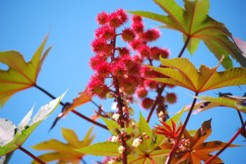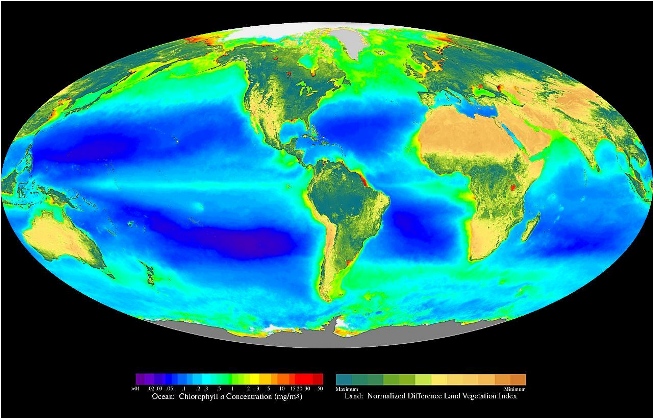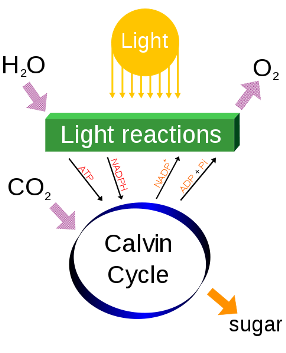Nutrition
The castor bean acquires nutrients via a process known as photosynthesis. This process converts organic molecules and carbon dioxide into sugar and oxygen. Without this process we wouldn’t have as much oxygen in the environment as we do!
Want a larger image of the one above? Click here to have a better look!
The way this works is that the sun light hits
organelles on the leaf called chloroplasts.
Inside of these chloroplasts are pigments called chlorophyll,
these are the part that makes most plants green!
The sunlight enters the chlorophyll and the carbon dioxide enters
through stomata. Stomata
are
 cells on the leaf that act as a gateway between the inside and the
outside of the plants wall.
The energy from the sunlight and the carbon dioxide go through the
Calvin Cycle to produce sugar and oxygen.
The sugar that is produced is then distributed throughout the
plant by phloem. Sugar is
transported from areas where sugar concentrations are high, called
sources, to areas where sugar concentrations are low, called sinks.
The oxygen diffuses out of the plant and is then consumed by
other organisms. The castor
plant gains water from the water in the ground.
The water is sucked up through the roots and is then transported
up the plant through xylem. Not
only are the roots responsible for getting water but they also act as a
support system helping to keep the plant in the ground.
cells on the leaf that act as a gateway between the inside and the
outside of the plants wall.
The energy from the sunlight and the carbon dioxide go through the
Calvin Cycle to produce sugar and oxygen.
The sugar that is produced is then distributed throughout the
plant by phloem. Sugar is
transported from areas where sugar concentrations are high, called
sources, to areas where sugar concentrations are low, called sinks.
The oxygen diffuses out of the plant and is then consumed by
other organisms. The castor
plant gains water from the water in the ground.
The water is sucked up through the roots and is then transported
up the plant through xylem. Not
only are the roots responsible for getting water but they also act as a
support system helping to keep the plant in the ground.
If you are interested in learning more about photosynthesis please visit Dr. M.J. Farabee’s webpage located here! Interested in plants that are carnivorous as opposed to autotrophic? Click here to learn about the Tropical Pitcher Plant!
Can't get enough of the castor plant? Time to check out the castor's Reproduction!
Back to Home To Multipleorganisms.net To UW-Lacrosse


